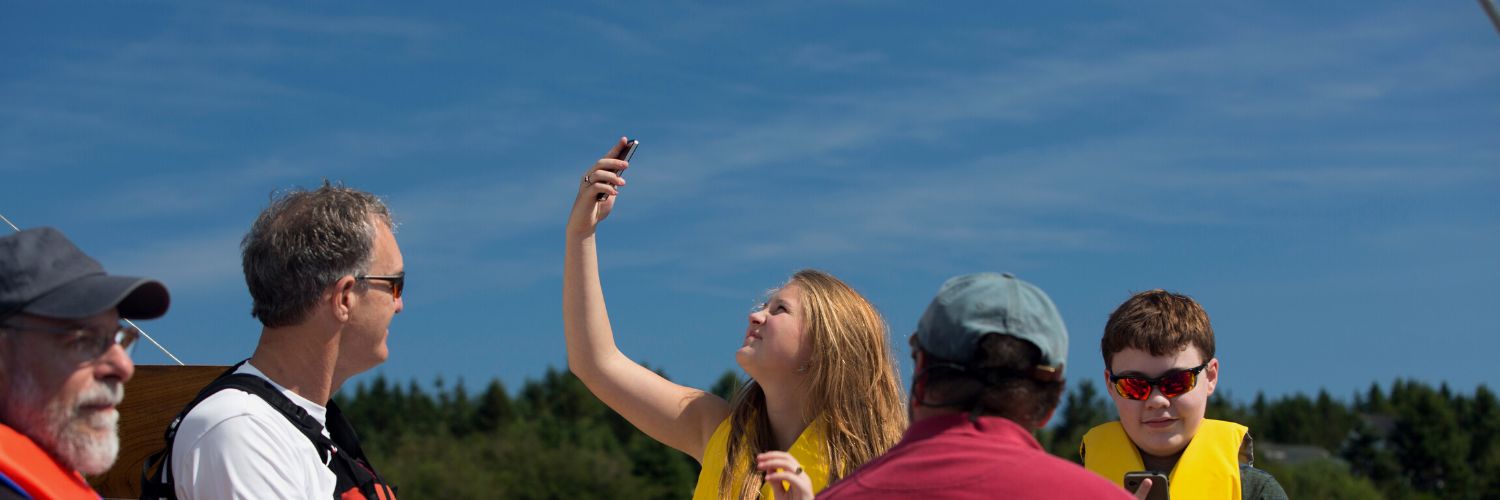By John Gullick, CPS-ECP Manager Special Programs
Quite often I get asked about the value of VHF marine band radios as means of communication vs a cell phone.
The answer to that is quite simple. With a VHF radio you have a means of direct contact with a Coast Guard Search and Rescue Center. Your distress message will also be picked up by other vessels of convenience who may be in a position to provide assistance close at hand.
The problem with a cell phone is related to how often we call someone and all we get at the other end is: “We are unavailable right now, please leave a message.” What good is that if you need assistance right away? For a cell phone you also require active cell service at your location.
All new VHF radios, both fixed mount and hand-held, are now equipped with an automatic Digital Selective Calling (DSC) system and I often receive a questions about the use of the VHF maritime radio and specifically DSC so I am going to do a brief Q and A on a few of those questions.
Q – Will the Canadian Coast Guard (CCG) continue to monitor channel 16 (Mid Frequency (MF) 2182 kHz)?
A – Canadian Coast Guard currently have no plans to discontinue this service.
In 2014, I contacted CCG HQ on the issue of monitoring Channel 16 and was advised as follows: “Canadian Coast Guard continues to monitor Channel 16 and has no plans to discontinue this service. If they do visit it in the future, it would demand public consultation.”
Q – How do I activate the Digital Selective Calling (DSC) feature in my VHF maritime radio?
A – Contact a regional Industry Canada Spectrum Management office and get a Maritime Mobile Service Identity (MMSI) number and then follow the DSC set up instructions in the radio’s Owner’s Manual. DSC cannot be activated without a MMSI number.
Q – Can I use the DSC feature for routine calling?
A – In addition to the automatic distress-alerting feature of VHF-DSC radios, the initial contact with another vessel, a “routine” call, is made digitally on channel 70. The channel for voice communication is indicated utilizing the vessel MMSI in a manner similar to that of a pager. Another vessels radio is digitally contacted and advised to go to a specific channel for voice communications.
Q – How can I find out which VHF channels to use for voice communication in my cruising area?
A – In the CPS-ECP Maritime Radio Course student’s notes and the Maritime Radio Course Module Two student’s notes you will find a copy of Industry Canada’s RIC 13 as Appendix 1, Table of Transmitting Frequencies for the VHF band 156 -174 MHz in the Maritime Mobile Service. This chart clearly identifies each of the channels 01 to 88, their areas of operation, the types of service and the types of traffic the can use the various channels. You can also go to the Industry Canada Spectrum Management web site and search RIC 13 for this chart.
Summary:
The DSC radio automatically, silently and continuously maintains a listening watch on the appropriate DSC channel, VHF channel 70.
DSC capabilities are not limited to emergencies. “All Ships”, Urgency and Safety alerts may also be received and sent to or from CCG Coast Stations and to establish routine contact with other DSC equipped vessels and coast stations directly without having to use the voice calling/distress channels.
One final note. Anyone operating a VHF radio, equipped with DSC or not, must have a Restricted Operators Certificate (Maritime) (ROC(M). This program is managed exclusively for Innovation, Science and Economic Development Canada (IC) by Canadian Power and Sail Squadrons. Register for a Maritime Radio course at: www.boatingcourses.ca
“As a marine first responder on Lake Ontario I can’t tell you how many times we’ve helped folks when their cells didn’t work (within site of the CN Tower). Marine VHF is critical for life safety.” – twitter user
Video Summary: John Gullick from the Canadian Power and Sail Squadrons tells Canadian Yachting magazine editor Andy Adams about DSC, VHF radios and the Power Squadron courses.
